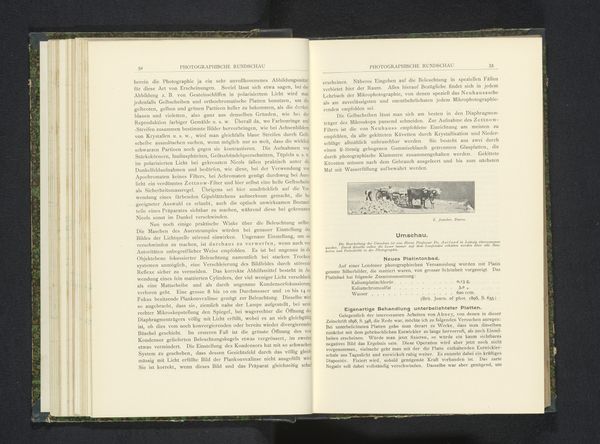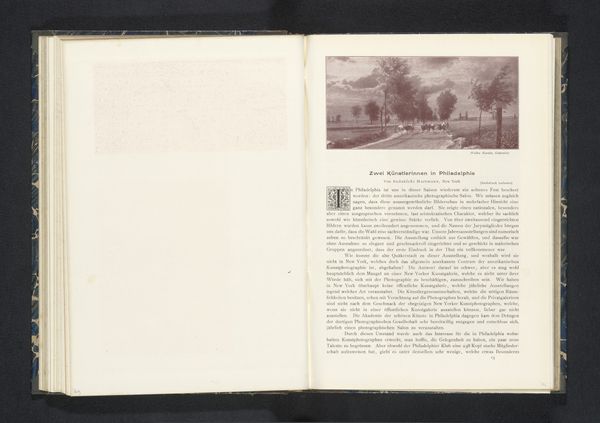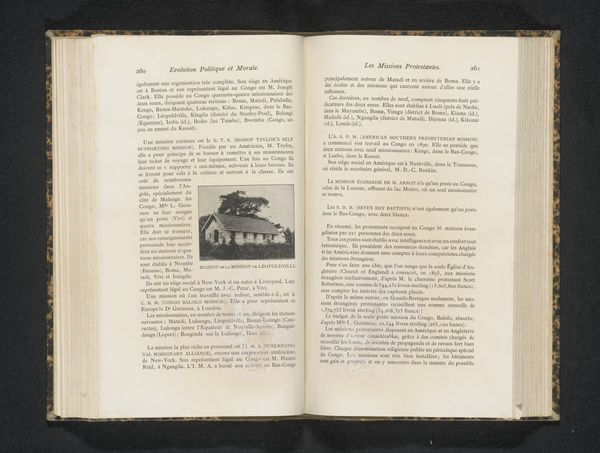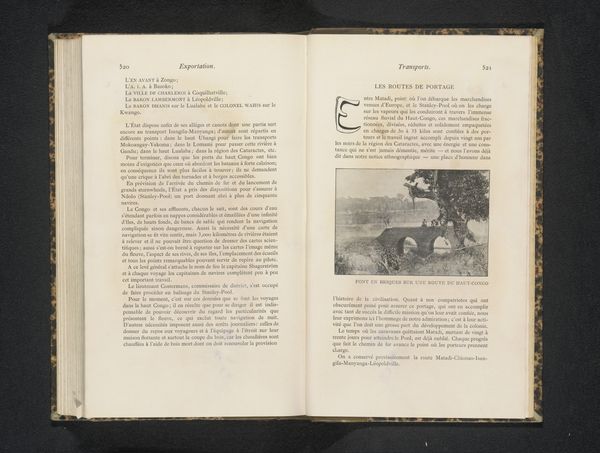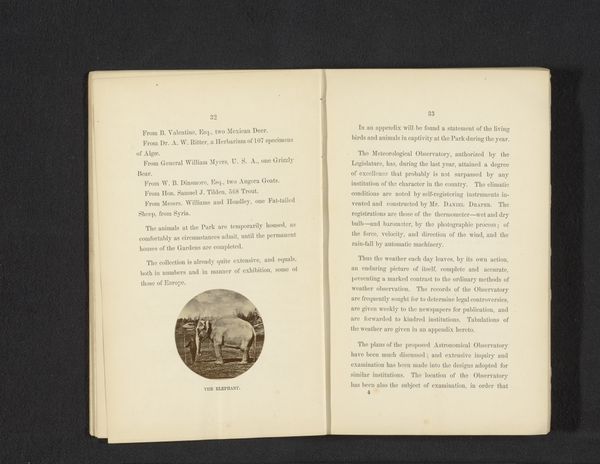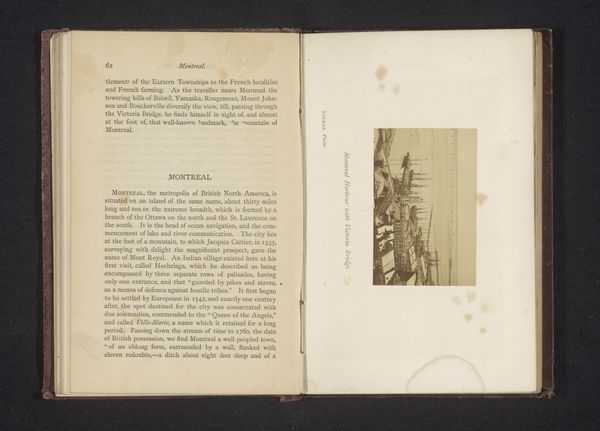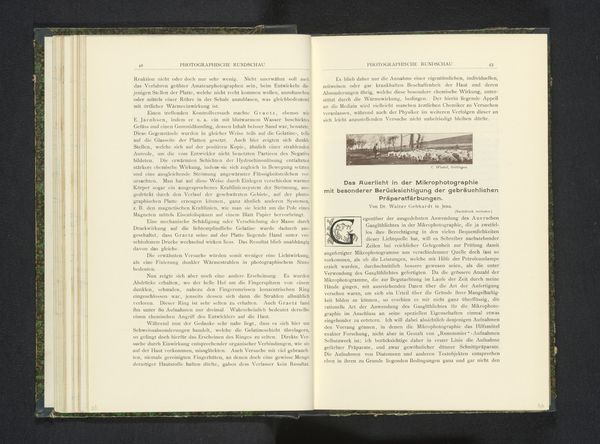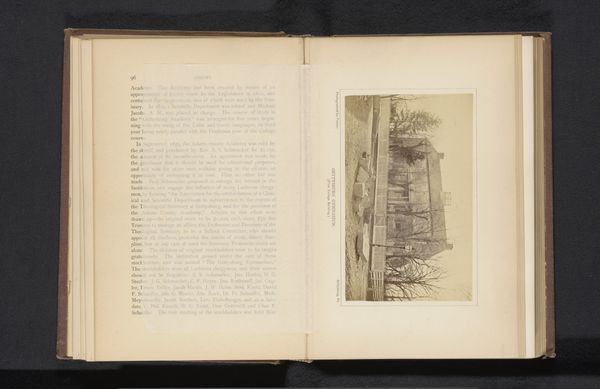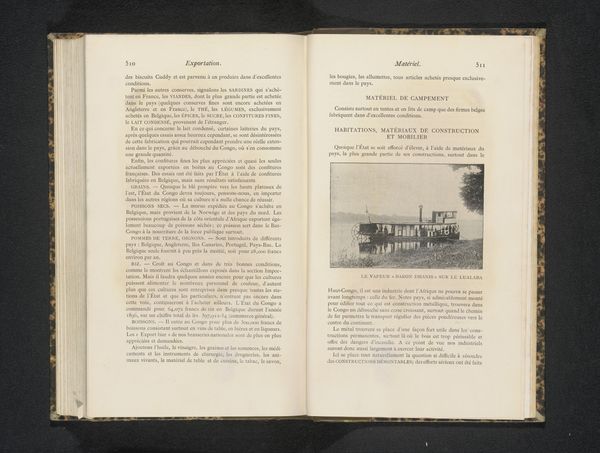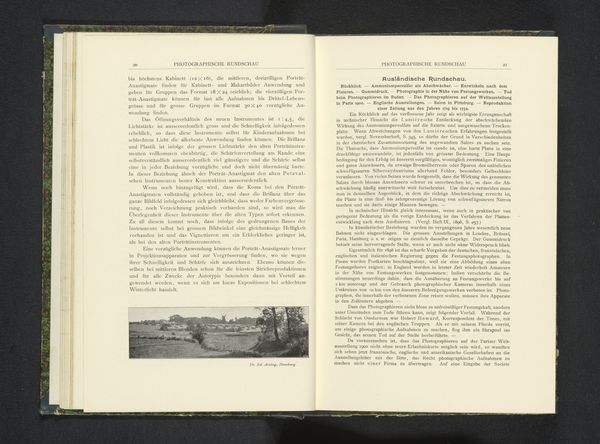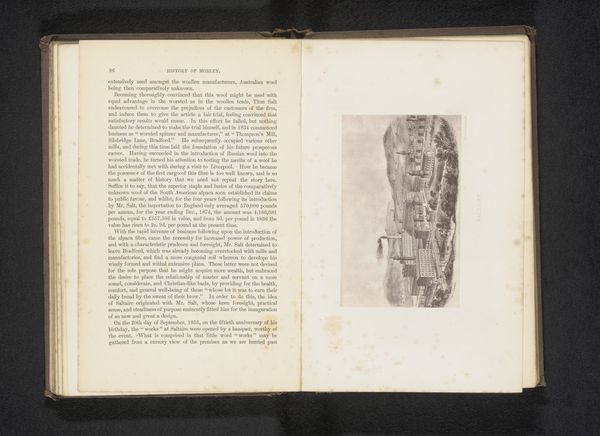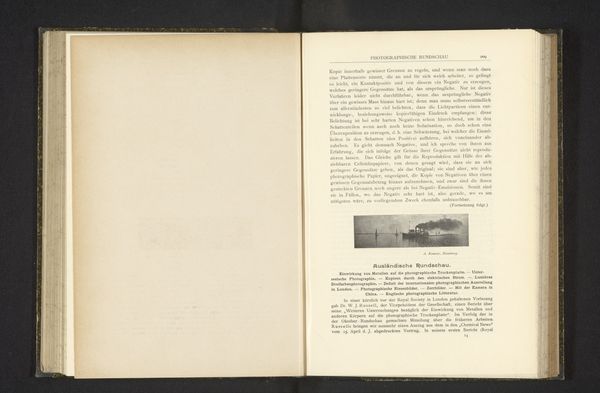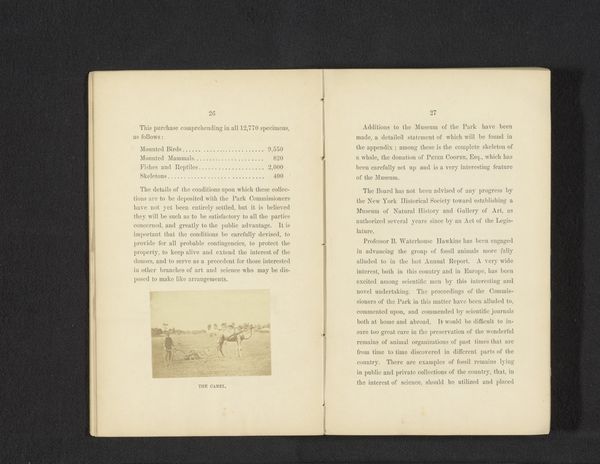
print, textile, photography
# print
#
textile
#
photography
Dimensions: height 69 mm, width 100 mm
Copyright: Rijks Museum: Open Domain
Curator: We’re looking at an image titled “Pier van Boma met mensen,” translating to “Pier of Boma with People," dating to before 1892, of which photography is the key medium. The work seems to be embedded in a book page. What strikes you first? Editor: A melancholic feeling. The pier stretches towards a distant point, almost fading into the fog, dwarfing the human figures gathered along it. It feels transient, a place of arrivals and departures. The sea of the background seems to be of considerable weight for its influence on the entire imagery. Curator: The photograph offers a rare glimpse into late 19th-century public works. Consider how access to infrastructure reflects social and political priorities, influencing movement, trade, and colonial expeditions during that era. It really captures that. Editor: Precisely. Symbolically, a pier represents connection – a link between land and water, civilization and the unknown. However, this image projects isolation, emphasizing the pier’s vulnerability. There's something forlorn in the composition of the workers themselves. Curator: I think it captures a society caught between progress and an unknown future, reflected in its relationship with technology and resources. Note how the industrial development and social reality contrasts starkly within the single frame. It speaks volumes about colonial expansion in the late 19th century. Editor: It suggests the ephemeral nature of progress itself. Piers are built structures, meant to endure, yet they are constantly subjected to the ocean's forces and human wear. Their very purpose is in a way against natural and temporal currents. Curator: True, viewing it through our modern perspective, the print resonates more deeply. It prompts us to consider the human cost of progress, as we witness structures rise. And question their significance against natural events. Editor: Ultimately, this little image stirs great historical currents in our collective awareness and I appreciate that. Curator: It makes you pause and imagine stories of countless individuals, that really connects to modern audiences.
Comments
No comments
Be the first to comment and join the conversation on the ultimate creative platform.
